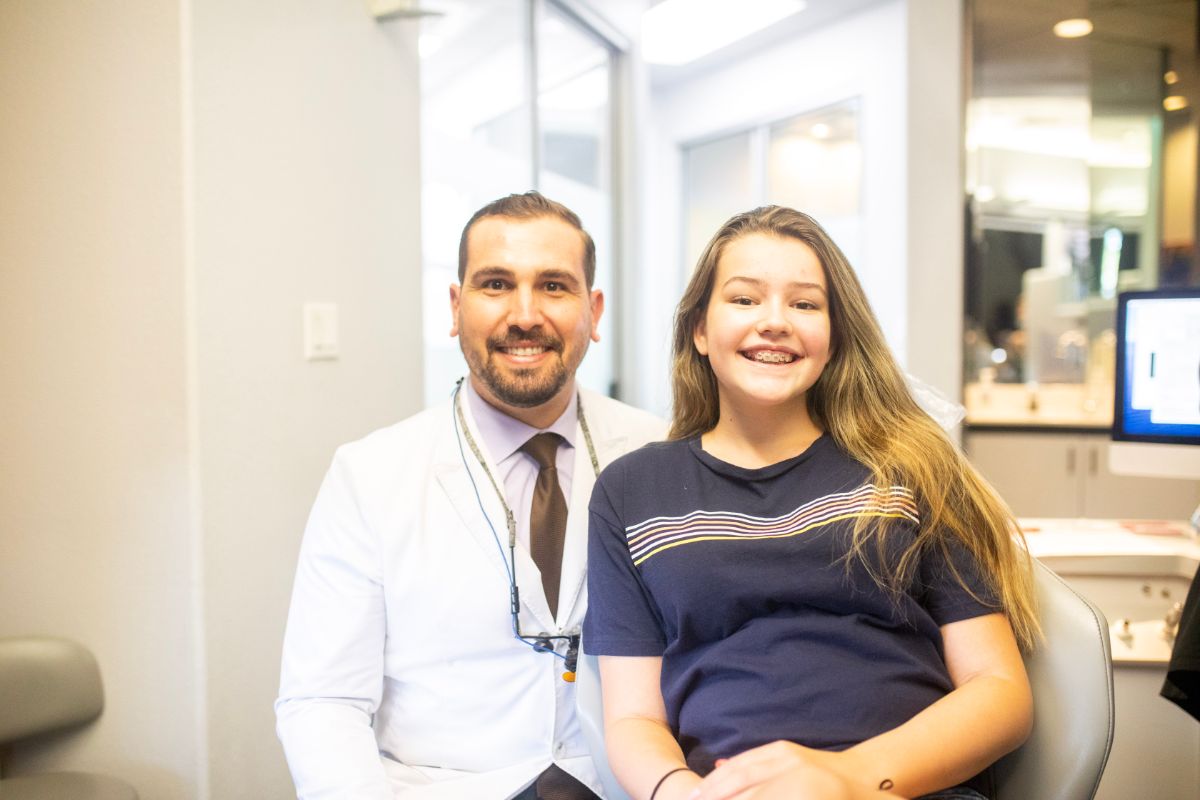While orthodontic treatment is most often associated with teens and braces, the truth is it can benefit patients of all ages, including children. That’s one reason why the American Association of Orthodontists recommends every child has an orthodontic evaluation by the time they’re about 7 years old! If you have a child around this age, you may be confused by this recommendation, since younger kids still have mouths that are developing with lots of baby teeth left. But being able to identify potential problems earlier in life gives orthodontists the chance to correct them at the most opportune time!
Here at Serrano Orthodontics, we believe that this kind of preventative approach to care gives children the best shot at a lifetime of healthy smiles. We offer a free consultation to potential patients—for children, this includes an assessment of their oral health and dental development up to this point. One of our doctors will be looking for anything that stands out that may signify a need for further observation and possible treatment, whether now or in the future. Possible problems that are detected between the ages of 6-9 may prompt something we call interceptive orthodontics.
What is interceptive orthodontics?
Interceptive orthodontics, also known as Phase I orthodontics,allows us to identify and diagnose issues with jaw growth or tooth development at a younger age. Treatment in this phase often gives us better results, as it creates space for the proper development and eruption of the permanent teeth. It can also enhance the growth of a child’s jaw, which in turn promotes a healthier relationship between the teeth and jaws. In simpler terms, interceptive orthodontics is capable of giving children a more symmetrical smile and improving their overall oral health!
Who is a good candidate for interceptive orthodontics?
When you bring your child in for an initial evaluation, our doctors will fully inspect their teeth and jaws. They may discuss the option of interceptive orthodontics with you if it appears that:
- your child will be prone to a problem we want to prevent
- your child already has a developing problem that we now want to intercept
- your child’s jawbones may need some guidance as they grow
Most orthodontic issues are genetic, like gapped or crowded teeth, extra or missing teeth, and certain other irregularities. Some may be acquired, however, through injury, premature tooth loss, or bad oral habits like extended thumb sucking or pacifier use. Whatever the cause, these problems can affect the alignment of your child’s teeth, their facial development, and the cosmetic appearance of their smile. Interceptive orthodontics can successfully address all of the above!
What are some examples of interceptive orthodontics?
Some parents are worried that bringing their child in for an early orthodontic exam will automatically lead to treatment. This is rarely the case, though—immediate treatment is indicated for only a small percentage of the children we evaluate in our Phoenix and Chandler offices. Even if our doctors do recommend treatment, it won’t necessarily mean putting your child into braces right away. Many common treatments in this phase don’t even use brackets, wires, and bands! Some examples of this include:
- removing one or more primary teeth to help guide the proper placement of the permanent teeth
- using expanders to widen the upper jaw and provide space for very crowded teeth
- placing teeth spacers to save a spot for permanent teeth if a primary tooth has been lost early due to injury or decay
By following the normal patterns of a child’s dental growth and development, our doctors are able to treat orthodontic issues at the most optimal time. This is ideal, as many problems can be treated fairly easily in a child whose mouth is still developing but would require more invasive treatment once their jawbones stop growing. This normally happens between the ages of 16-18 and can make treatment more complex.
Using interceptive orthodontics, we’re able to achieve lasting results for the above issues and may be able to lessen the impact of others. Most patients will still require a second phase of treatment with braces or aligners to complete the alignment process, however.

Monitoring your child’s smile as they grow
Early orthodontic evaluations are an easy way to give your child the best foundation for a fully functional smile. Even if we don’t detect any oral issues that need attention, there are numerous benefits to visiting an orthodontist throughout childhood. These regular check-ups allow our doctors to:
- monitor the progress of emerging permanent teeth
- monitor the progress of facial and jaw development
- reduce the need for jaw surgery later in life
- guide emerging teeth into the ideal positions
- detect any hidden dental problems
- reduce the risk of impacted teeth
- reduce the risk of needing tooth extractions in the future
We love watching our young patients grow through these visits! Being able to approach their smiles proactively instead of reactively puts us in the best position to give children the care they need at the time it will be most beneficial.
Give your child’s smile the best start with Serrano Orthodontics
Your child’s smile is as unique as they are. What works for one may not be a good fit for another, and that’s why we build a customized treatment plan around every patient’s specific needs, lifestyle, and desired results! Our personalized care ensures every child receives exactly the right plan for their smile. If your child is ready for their first orthodontic evaluation, get in touch today to schedule a FREE consultation with our Phoenix or Chandler office. It could make a world of difference to their smile!
